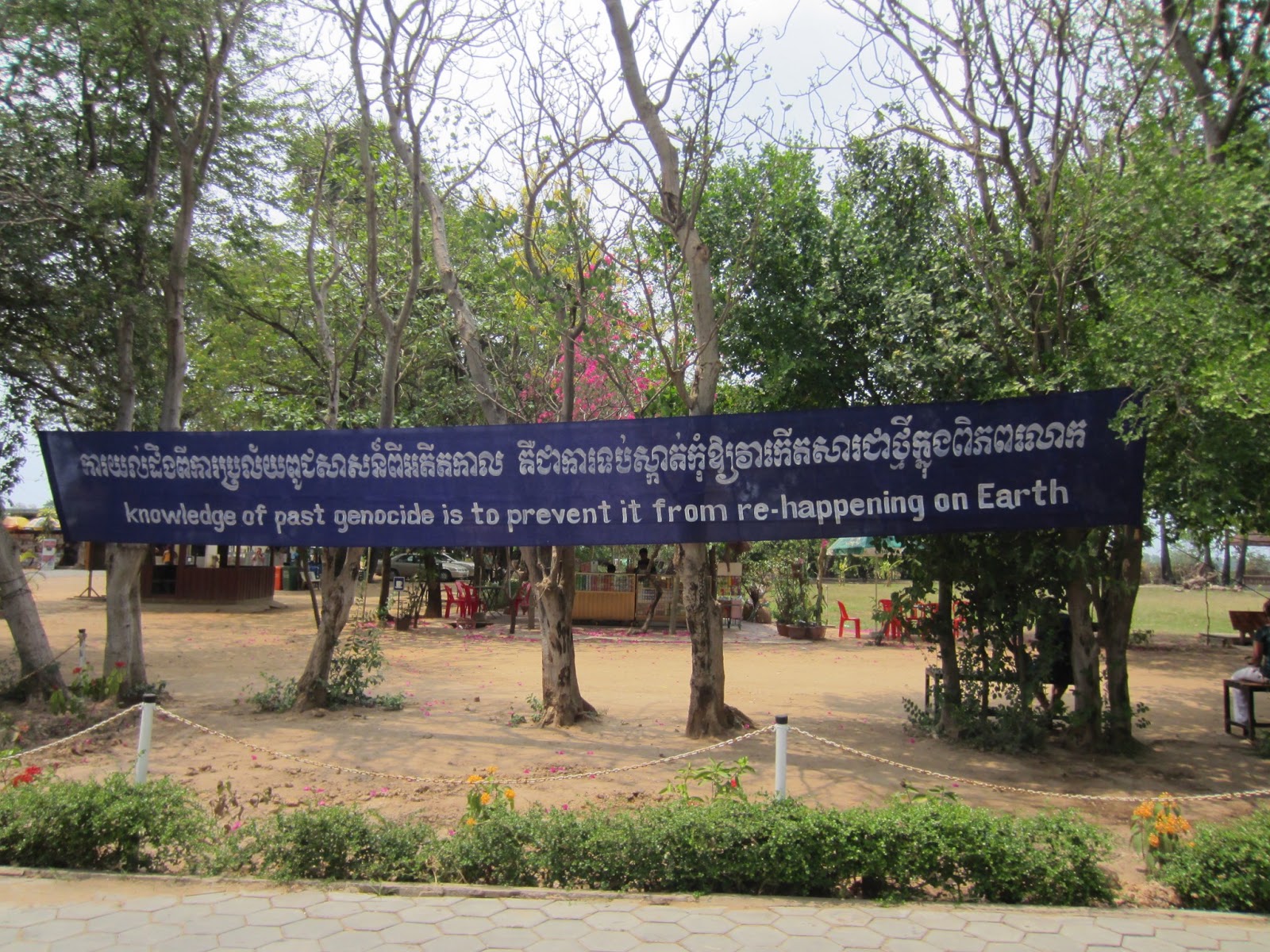On our way to the guesthouse in Phnom Penh, we noticed the Viva Phnom Penh location, and dually noted the location. That's correct, once we did a little exploring of our surroundings and went through one of the local markets, we headed to Viva for more Mexican food. We weren't that keen on what Cambodia had to offer us for food.
Many people skip over the capital city Phnom Penh because there's not too much to do there, but, there is a historical main attraction, for lack of a better word in this case. At the end of the Cambodian Civil War in 1975 the Khmer Rouge regime (read: Commies), lead by a Cambodian named Pol Pot, ruled over Cambodia from 1975 - 1979. During this time they committed a mass genocide of the Cambodian people resulting in millions of deaths. Cambodia lost between 1/4 to 1/3 of their population during those 5 years.
We went out to one of the main killing fields Choeung Ek,15 km away from Phnom Penh, where the regime forceably transported prisoners to be killed. We were given headphones to take an audio tour of the grounds. Here's a little of what we learned from this day.
It was discovered that there were over 20,000 mass grave sites around the country, known as killing fields, where over 1.3 million people were executed. Prisoners included doctors, lawyers, teachers, intellectuals, suspected capitalists, professionals, non-nationals, monks, and citizens with glasses and/or anyone else who remotely had an intelligent idea of what an actual functional and healthy society should be.
 |
| Holes in the ground from the mass graves (these were excavated in the '80s) |
 |
There was no money for bullets, so executioners used hoes, axes, and other farm tools, and in this instance swung children against trees.
|
 |
| Inside the memorial marked by a Buddhist stupa |
Another part of the somber day was a visit to the S-21 Genocide Museum which was a high school turned prison where men, women, and children were held to be interrogated, tortured, forced into confessions, and later taken to the killing field to be executed.
 |
| The Khmer Rouge kept detailed records of names/ pictures of every prisoner |
It was a tough day seeing and learning about the tragedy that happened here just less than 40 years ago! We were embarrassed that we really didn't know anything about the genocide in Cambodia before that day. As a banner at the killing fields stated, "Knowledge of past genocide is to prevent it from re-happening on Earth".
That evening Matt went along a street to get a $2 Cambodian haircut. Although a little skeptical given the price and the location (open-air room on the side of a busy street), it turned out quite well ;-).
 |
| Before |
 |
| After |








No comments:
Post a Comment